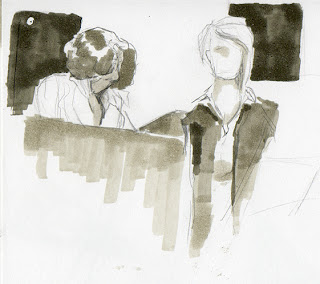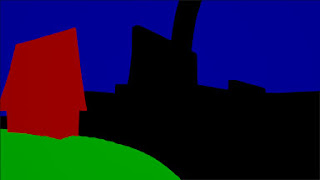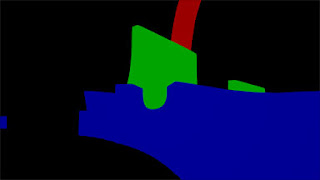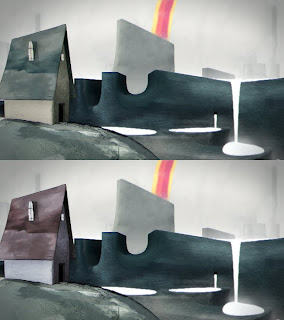Eggs and Bananas.
---------------
Art isn't a technique. Methods are also not the root of style.
Your style is determined by your values and how you choose to see the world around you.
No matter who you are.
You're capable of seeing, hearing and feeling something beautiful or something interesting.
This is why everyone has a style and anyone can be an artist if they can bridge the gap for communication.
To pursue something artistically is about refining this communication by using the techniques that you hone through the years to share visions and feelings. It's all learning about how you experience the magic of reality (or surreality) and displaying it in a way that can be understood by the audience.
Your methods are your vocabulary, but they aren't actually what you perceive.
Artists are explorers of communication.
Again. You're capable of seeing, hearing and feeling beauty or intrigue.
You could dismiss it as something nobody else can understand or that it's something to be ashamed of.
or
You can try to see what techniques could work to communicate it.
--------------
To me, art is a dialogue: A conversation that does not have to have words.
If you can strike a conversation, then you're getting somewhere.
I do, however, think the nature of the conversation should always be healthy.
I'm not saying to abstain from controversial or touchy subjects but to be aware of the nature of the dialogue you wish to bring forth (especially when religion and personal fetishes are involved).
How comfortable are you making the audience feel? Are you simply being confrontational? Are you imposing an idea or are you merely suggesting it?
--------------
Sometimes, though, I feel that a lack of focus on real stimulating dialogue can lead to a lot of rambling in art or an over-simplification of a concept.
I think I'll come out and say I don't believe in falling back on "Artistic License" because I think it's just feigning ignorance when you cause a stir and/or the artist is just too mentally lazy to really ask WHY.
"because **** you" is not a legitimate reason because there is no dialogue there.
It means that the person is not open to intelligent debate and presents a piece as a brick wall.
When the audience isn't respected as someone who is capable of having meaningful input.... how does that make a point? Will the audience even be willing to listen to you when you obviously don't think of them as more than someone you can be condescending to (or dupe into giving you cash)?
For anything conceptual, I think anyone who is able to get people talking should at least try to figure out the words to explain what they do in order to stimulate conversation. I really don't think there are a lot of artists who 'are simply bad at expressing themselves in words' where they are unable to explain themselves to any extent. When it comes to concepts that have compelled them enough to actually make something, I become a bit skeptical.
Einstein said that "If you can't explain it in simple terms, you don't know it well enough."
If anything, I think it stems from a fear of not having a bulletproof concept.
IT'S OK TO NOT KNOW EXACTLY WHY.
Just don't leave it like that. Investigate.
Don't use "artistic license" to shut yourself off until you can find the right words to explain it. It will come off as you just don't care what other people think and you don't want to even try. When you say it often enough, you start to believe it.
I'm not sure if I'm alone on this, but I think it's actually more acceptable to say, "I'm not sure." or "I don't know how to put it into words yet." It tells people that you do think about it.
...and for the love of all things good, please don't just think, "whatever" when it comes to your work not hitting the mark you want. That's what practicing the craft is for. Perfect communication is really really hard to achieve, but that shouldn't stop us from trying.
-------------
Many I've seen will resort to limiting the depth of which they explore concepts in order to keep their arguments watertight.. and that it's almost futile to go deeper without losing our grounding or opening up a can of worms of unrelenting criticism.
To me, art is a part of the journal for society no matter how strange, or superficial something may seem,
but it is also necessary for art to be dynamic and always question the canon. To defy convention is one of the key natures of an explorer.
Without it we may become derivative machines 'Frankenstein-ing' our way through concepts by only mixing and matching tried-and-true methods that were established centuries ago.
but "Our knowledge has made us cynical; our cleverness, hard and unkind." - the Great Dictator.
Do we simply revel in impersonal notions and popular trends in order to ride the wave to hopefully gain recognition? Is it really futile to speak out if you see something that bugs you or intrigues you? Are the only guidelines we give ourselves, "Has it been done before or done to death?"
Don't get hung up on finding something 100% brilliantly original. Just because something has been done before doesn't mean it can't be done in an impactful way according to YOUR way of seeing.
When we stop worrying too much about making something for innovation's sake and develop ideas being driven by our real needs and wants, you'll make progress. You may even stumble upon something innovative without knowing it.
--------------
Of course conceptual ideas and abstract notions aren't everything.
The craft is just as important. There are an increasing number of capable, smart artists (or should I say people who realize they can be creative) arriving on this planet everyday. I just think most of them are selling themselves short by thinking that they don't have something significant or interesting to say. Your idea does not have to be powerful enough to start a revolution. It could be as simple as making someone smile.
There's no time like the present to start expanding your vocabulary of methods.
Many of us will find solace and a deep satisfaction from the process of creating and learning craftsmanship. There's nothing wrong about that because that's the only way to get better at portraying ideas, but to really grow mentally, you can't use that as a retreat all of the time. Don't let the obsession of learning your craft shut you off from trying to make something that you believe in.
Don't delay your great stories and conceptual worlds just because you feel that you don't have enough knowledge of the craft to show it in its full glory where, 'I need to know all of these techniques to start considering making this piece a reality'. There will always be more techniques waiting for you.
Always be willing to try out what you can do
at this very moment.
It may take you much further than you first realize.
Language is wasted if we're not using it to tell something meaningful.
You've got a vocabulary.
Test it out.
It'll be fun. I promise.
...and the sensation you get when someone sees your work and finally says, "I know the feeling!" is what makes it all worthwhile.
Professionals may not be paid to think very laterally, but I believe you owe it to yourself to reach your fullest potential both in the craft and in meaningful thought. It's for your heart. Let's not all become the 'art machines' that schools glamorize oh so much. We are not machine-men and machine-women.
The artists and the audiences are more than numbers.
We are people with joys, problems, hopes, anxieties and dreams. Both sides are.
---------------
take care,
stay creative,
and most of all,
stay considerate
if you want to get some meaningful conversation going.
~MikEll






















